Year 7 Solving Equations Worksheets
Forming and Solving Linear Equations: a𝑥 = b and 𝑥/a = b
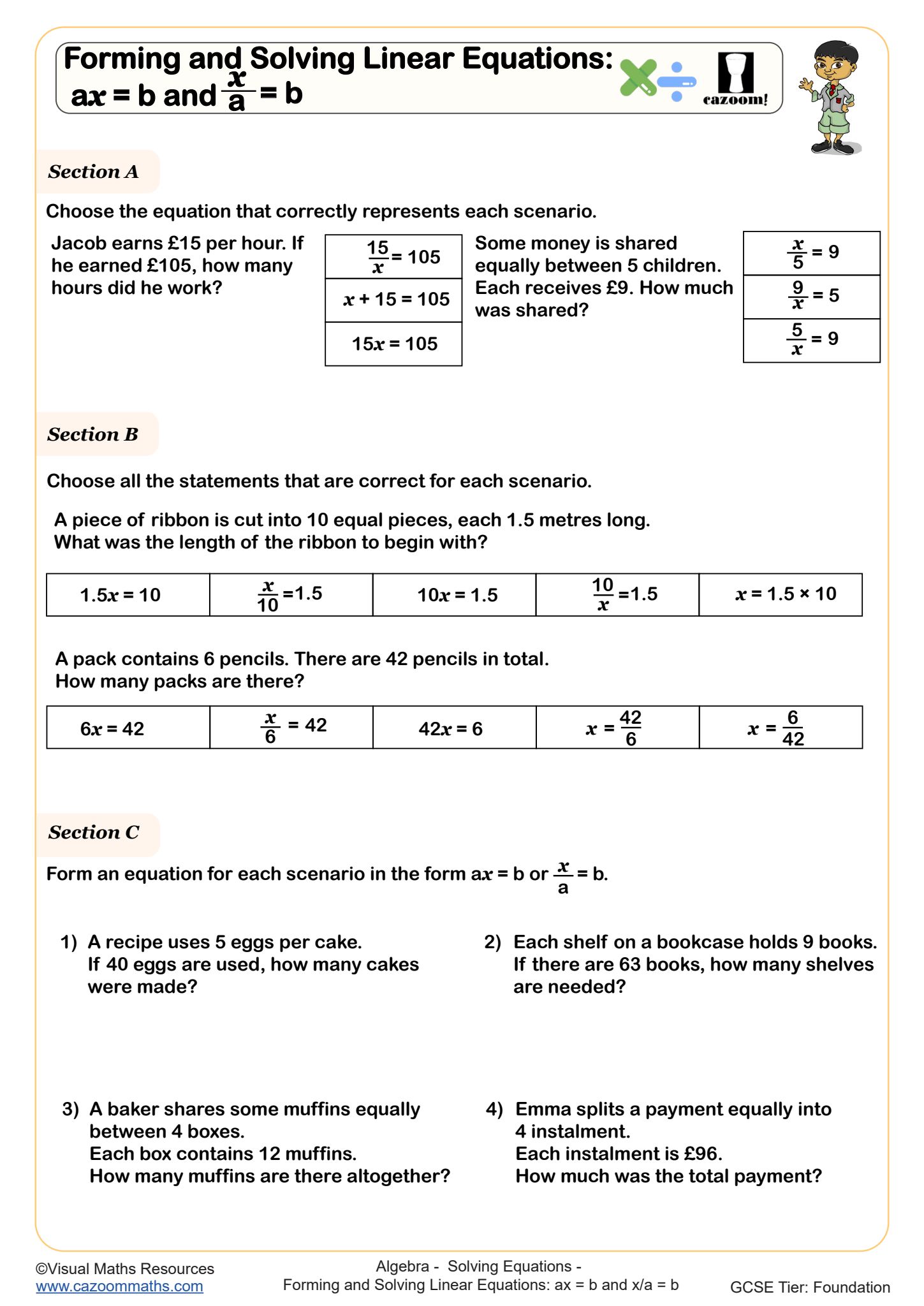
Forming and Solving Linear Equations: x + a = b and x - a = b
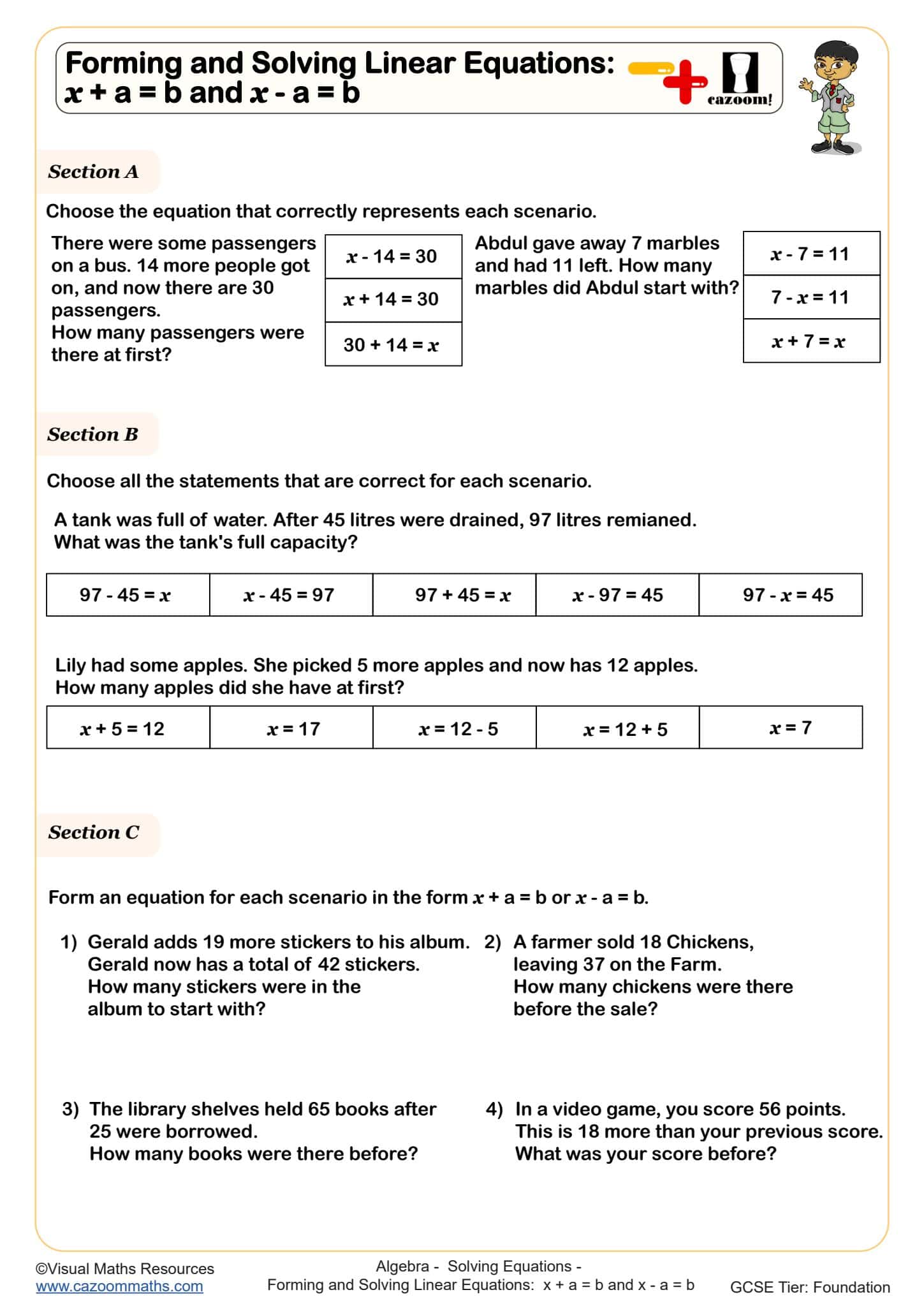
Manipulating Equations
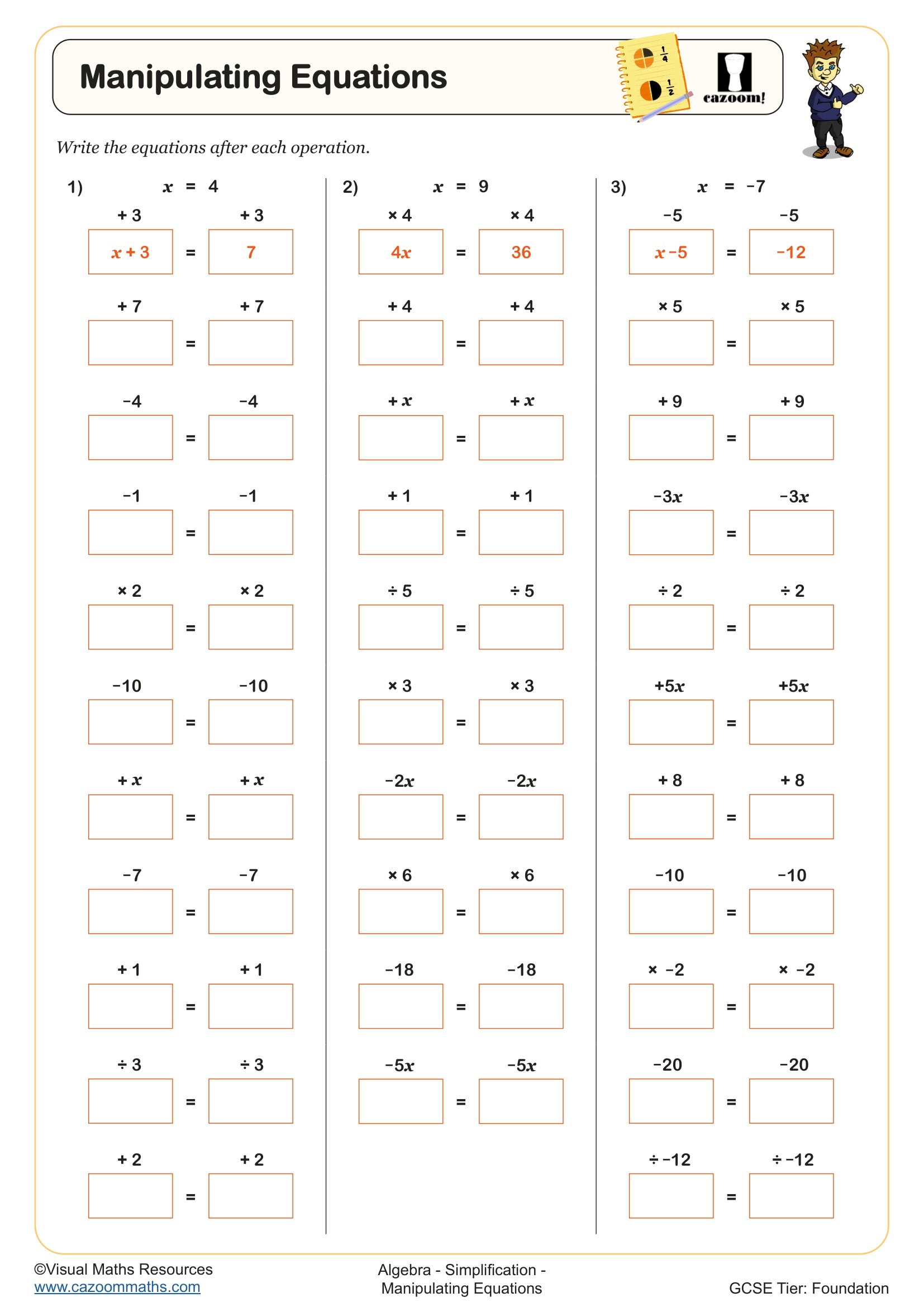
Solving Equations with Algebraic Perimeters
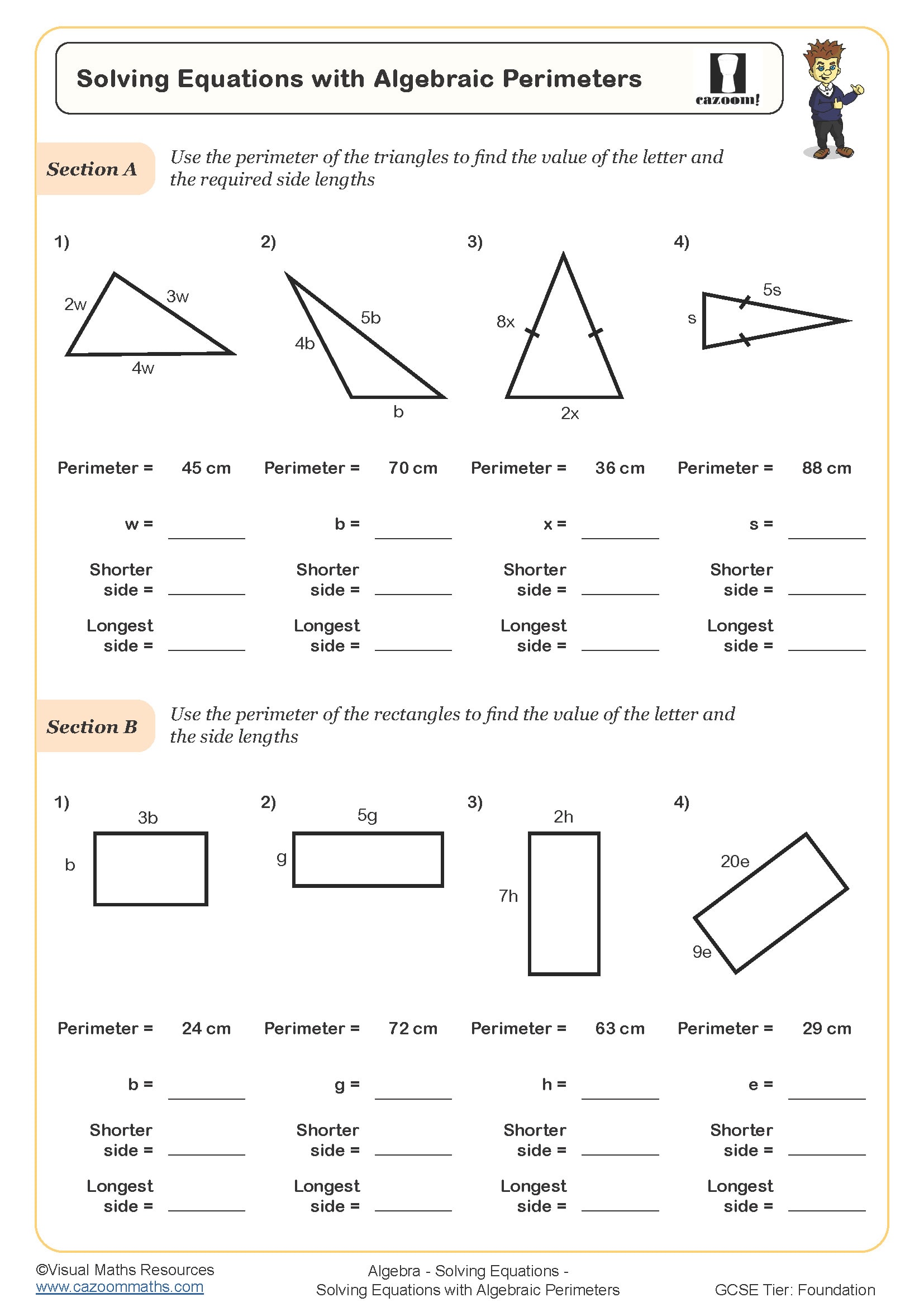
Solving Linear Equations (A)
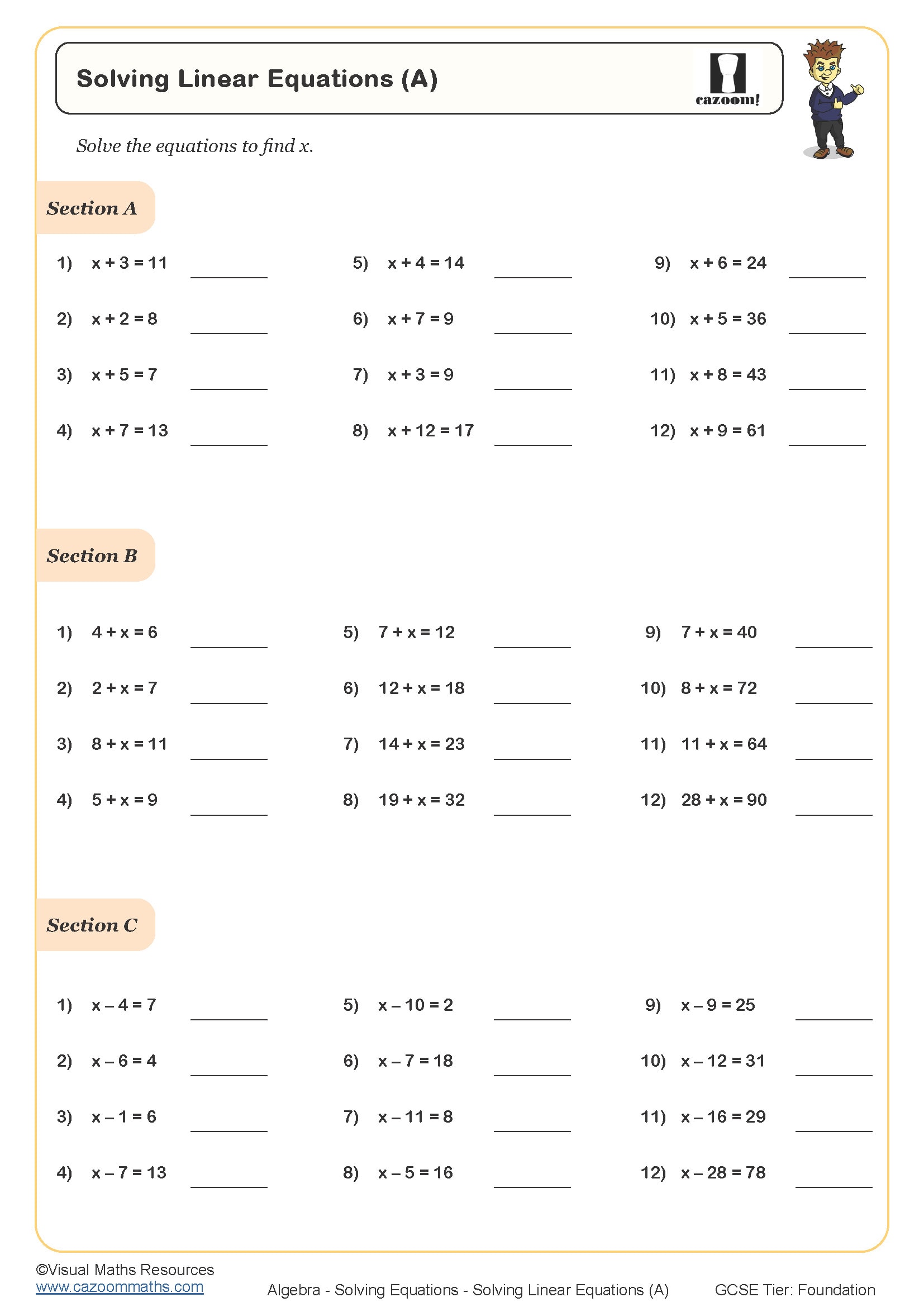
Solving Linear Equations (B)
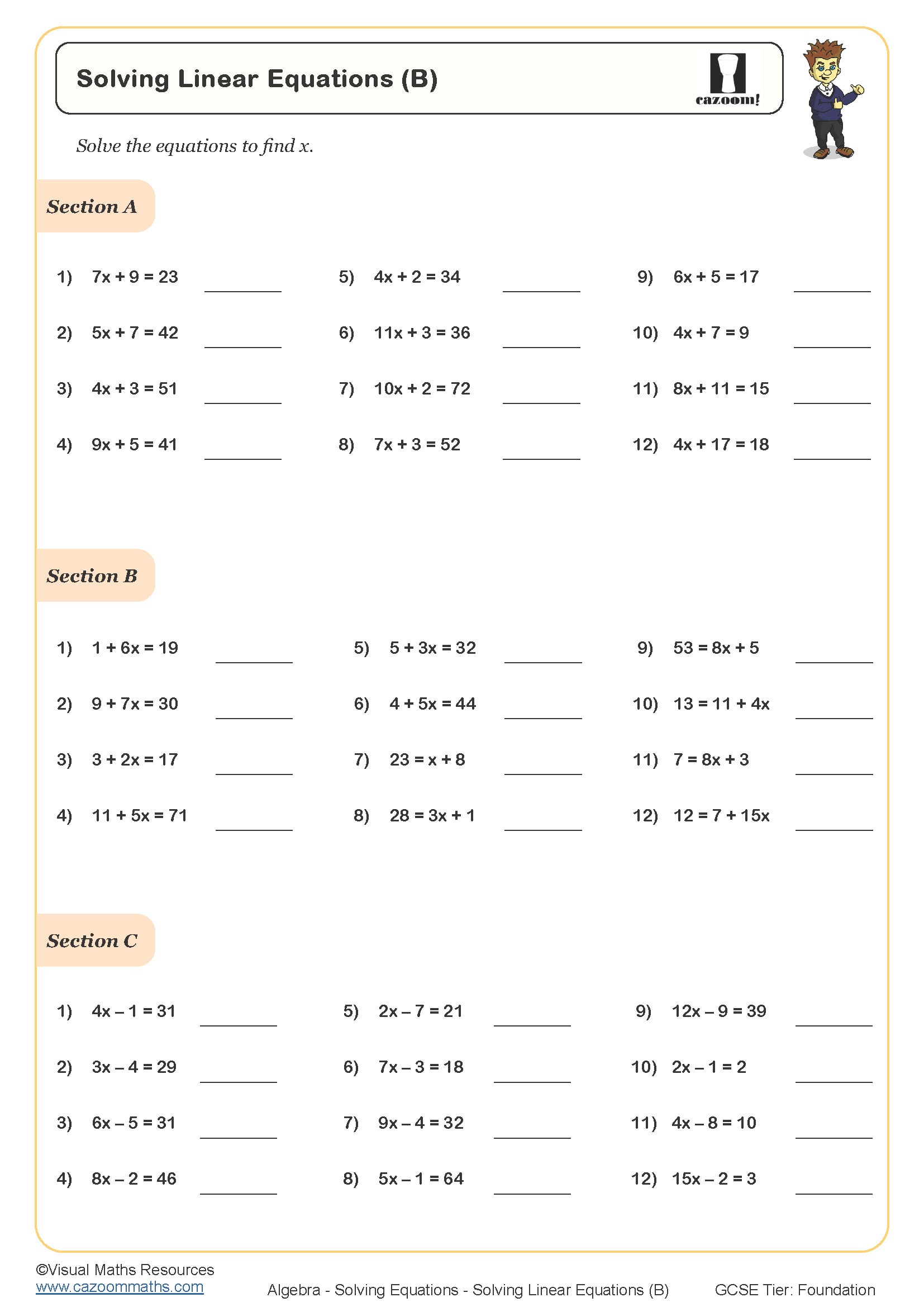
Solving One Step Equations with Algebra Tiles
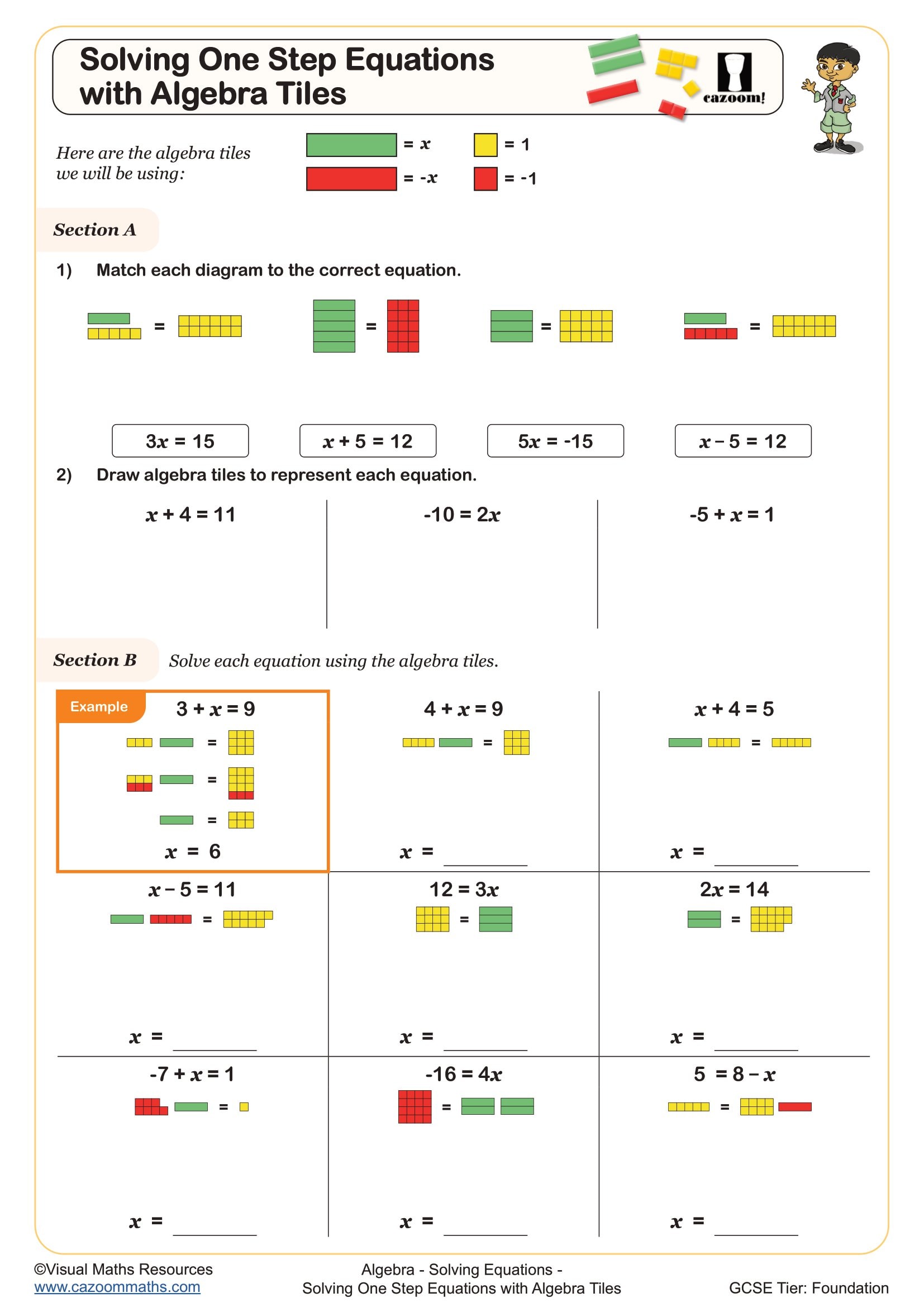
Solving One Step Linear Equations
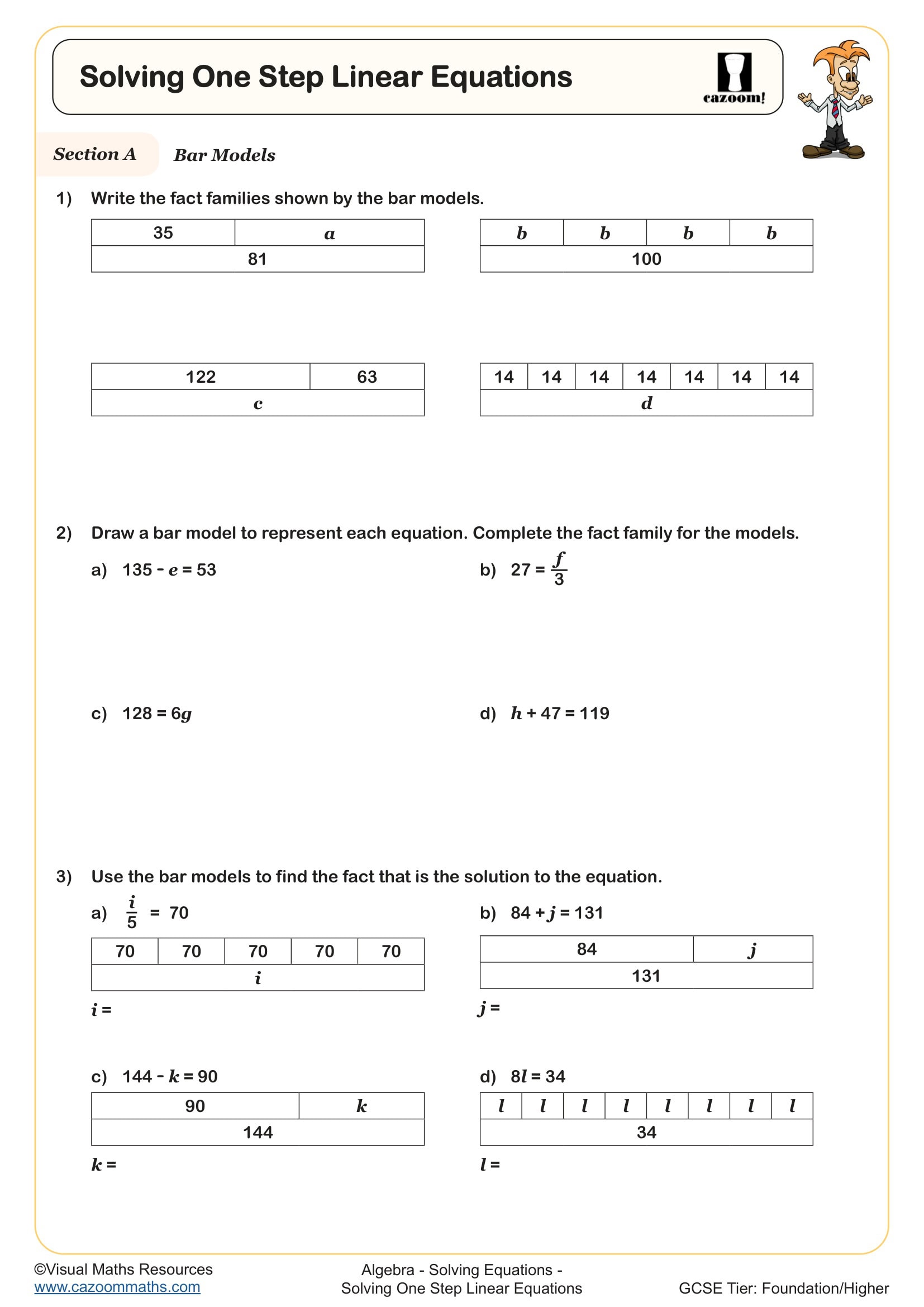
Solving Two Step Equations with Algebra Tiles
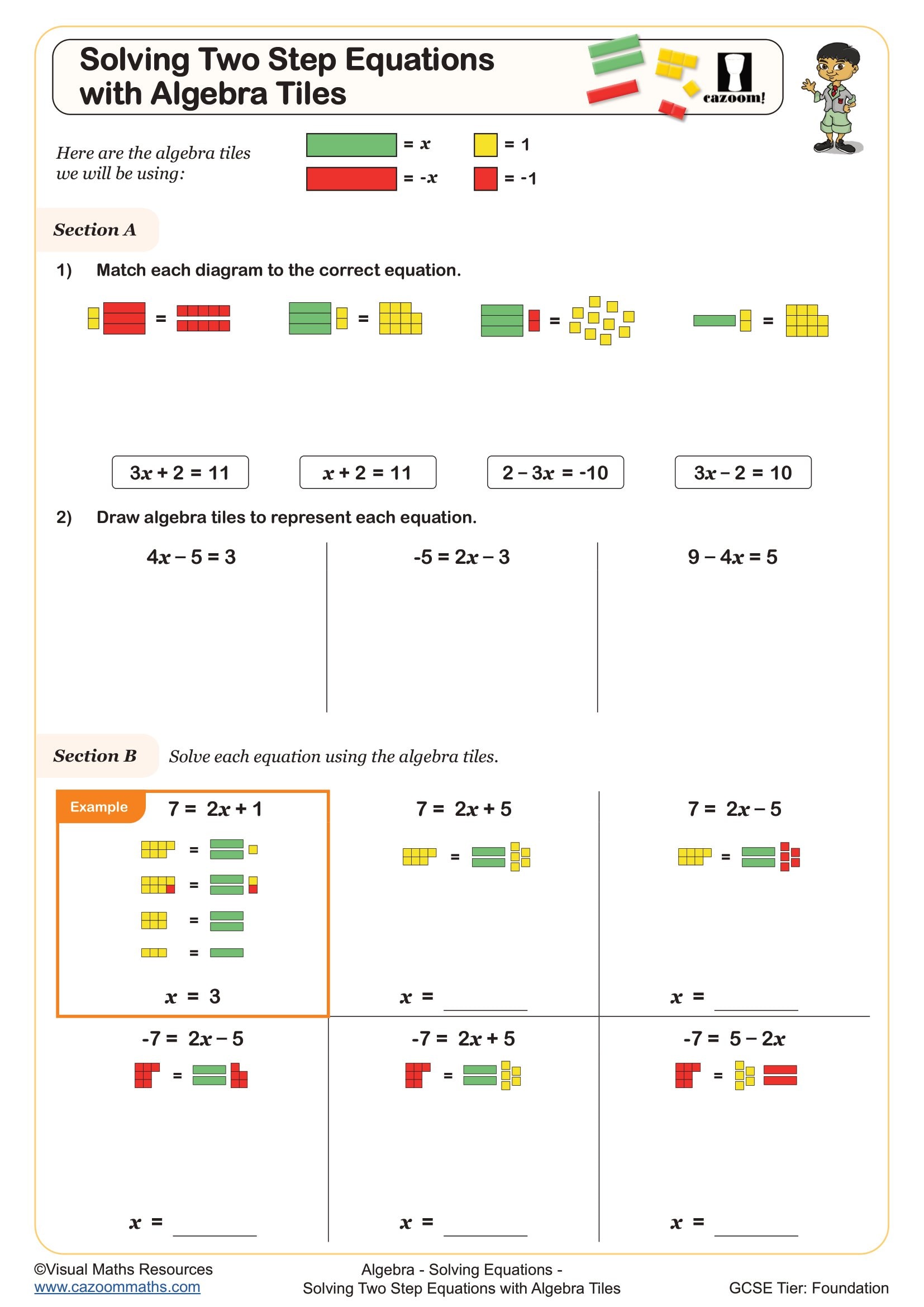
Want Better Results? Use Year 7 Solving Equations Worksheets Today
Mastering equation-solving in Year 7 marks a critical shift from arithmetic calculation to algebraic reasoning. With these printable PDF activities students learn to work with unknowns, manipulate expressions, and maintain balance across equals signs - skills that underpin all future algebra topics. Regular practice with varied equation types strengthens pattern recognition whilst reinforcing inverse operations. Those who develop solid techniques early find greater success with inequalities, simultaneous equations, and formula manipulation later. Consistent exposure to different problem formats helps learners select appropriate strategies independently. This methodical approach establishes the logical thinking needed throughout secondary mathematics.
Specific learning benefits include:
• Strengthens inverse operation understanding
• Develops systematic problem-solving approaches
• Builds algebraic notation fluency Enhances logical reasoning skills
• Improves checking and verification techniques
• Creates strong GCSE foundations
• Supports cross-curricular applications
Essential Solving Equations Topics for Year 7 Students
The progression follows pedagogical best practice, introducing single concepts before layering additional complexity. Initial worksheets focus on one-step equations using familiar operations, allowing students to grasp the balance principle without overwhelming cognitive load. As competence grows, resources introduce brackets, variables on both sides, and fractional coefficients. Visual representations and bar models support those preferring concrete starting points. Worked solutions demonstrate multiple pathways, showing that different approaches can reach identical answers whilst revealing common misconceptions to avoid.
The core skills covered include:
• One-step equations – adding, subtracting, multiplying, dividing to isolate variables
• Two-step equations – combining operations whilst maintaining balance
• Equations with brackets – expanding before solving systematically
• Variables on both sides – collecting like terms strategically
• Fractional coefficients – clearing fractions through multiplication
• Word problems to equations – translating language into algebraic form
• Checking solutions – substitution to verify answers
• Negative solutions – understanding variables represent any value
Why Secondary Teachers Trust These Algebra Resources
Classroom-ready materials save valuable planning time whilst ensuring comprehensive topic coverage aligned with departmental schemes. The worksheets accommodate mixed-ability classes through graduated difficulty levels, enabling differentiation within single lessons. Answer keys with detailed working make marking efficient whilst providing clear feedback pathways for student improvement. The balance between procedural practice and conceptual understanding reflects current pedagogical research on effective algebra instruction. Resources print clearly for homework distribution or revision packs, maintaining quality whether used digitally or on paper. Teachers particularly value misconception-targeting questions that address common errors like sign mistakes or incorrect inverse operations. The consistent format across worksheets enables students to focus on mathematical content rather than decoding new layouts.
Real-World Applications of Year 7 Equation Skills
Equation-solving extends far beyond classroom exercises, underpinning countless practical situations students encounter daily. Understanding how to find unknown values from given information develops critical thinking applicable across disciplines.
• Working out a fair share or split bill
• Finding an unknown length from a perimeter
• Converting units with a fixed rule
• Balancing a budget with a fixed cost and a rate
• Simple price offers and deals